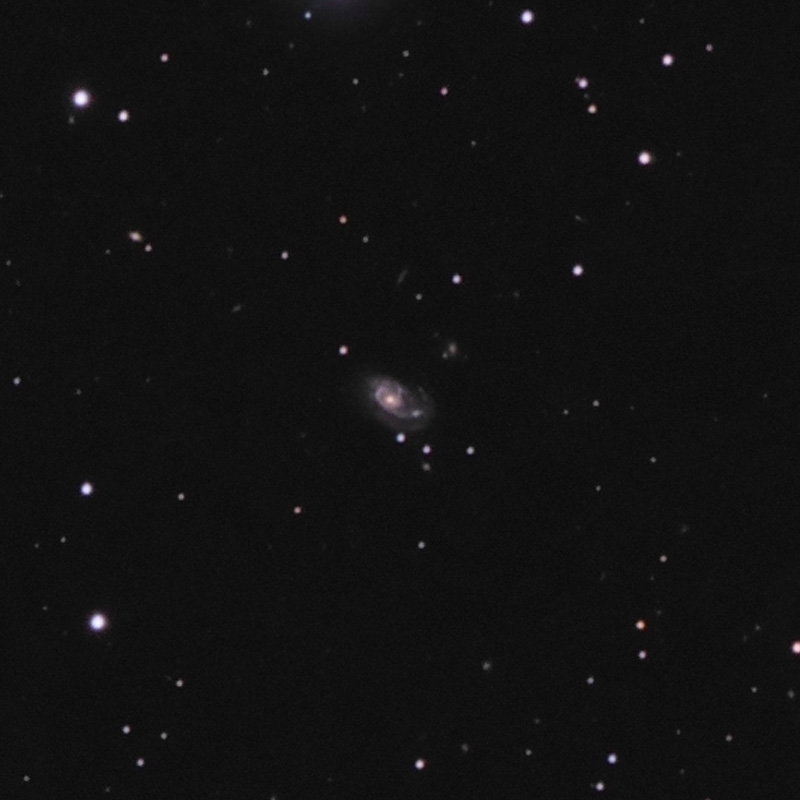| Description | Images |
Object name: ARP053Designation(s): ARP053, Arp 53/NGC 3290 is located in Hydra about 490 million light-years distant according to its redshift. Arp put it in his category for spirals with high surface brightness companions on an arm. He made no comment on it. NED classes it as SAB(rs)bs pec with HII emission. The obvious feature of this one is the long arm with a blue knot (the "high surface brightness companion"). But what's really strange is that the arm is shadowed by a fainter more diffuse but disconnected arm that runs parallel to the major arm. The "companion" isn't listed as a separate galaxy at NED but then most of the galaxies in the image aren't cataloged. In fact, NED lists no galaxies within 9.9 minutes of arc of Arp 53! The only galaxy in the image with a redshift measurement besides Arp 53 is the IR source 2MASX J10360744-1721350. It is the vertical oval southeast of Arp 53 and east of the bright M (orange) star in the image toward the lower left corner. It is 480 million light-years away so likely related to Arp 53. Though it shows no distortion so likely has never interacted with it. It was discovered by Francis Preserved Leavenworth in 1886. His logs only showed the year of his discovery. And yes his middle name is Preserved. Related Designation(s):2MASS J10351743-1716362, 2MASX J10351742-1716364, 2MASXi J1035174-171636, 2MIG 1453, 6dF J1035173-171636, 6dF J1035174-171636, ARP 053, ARP053, FLASH J103517.23-171637.9, IRAS 10328-1701, IRAS F10328-1700, MCG -03-27-020, NGC 3290, NVSS J103517-171635, PGC 031346, SGC 1032.7-1701, |

